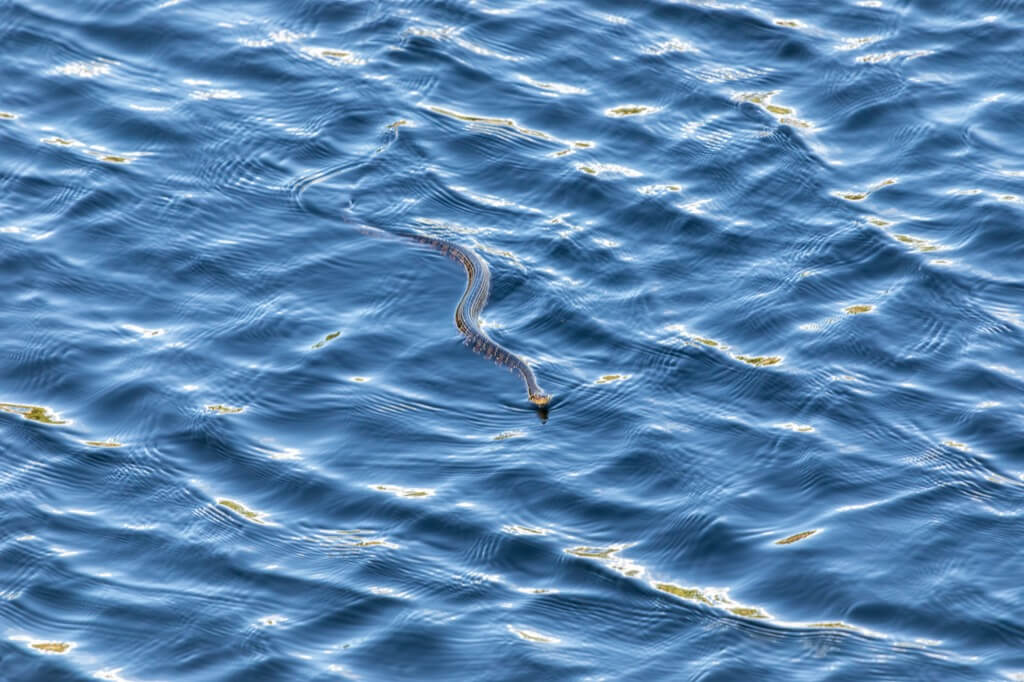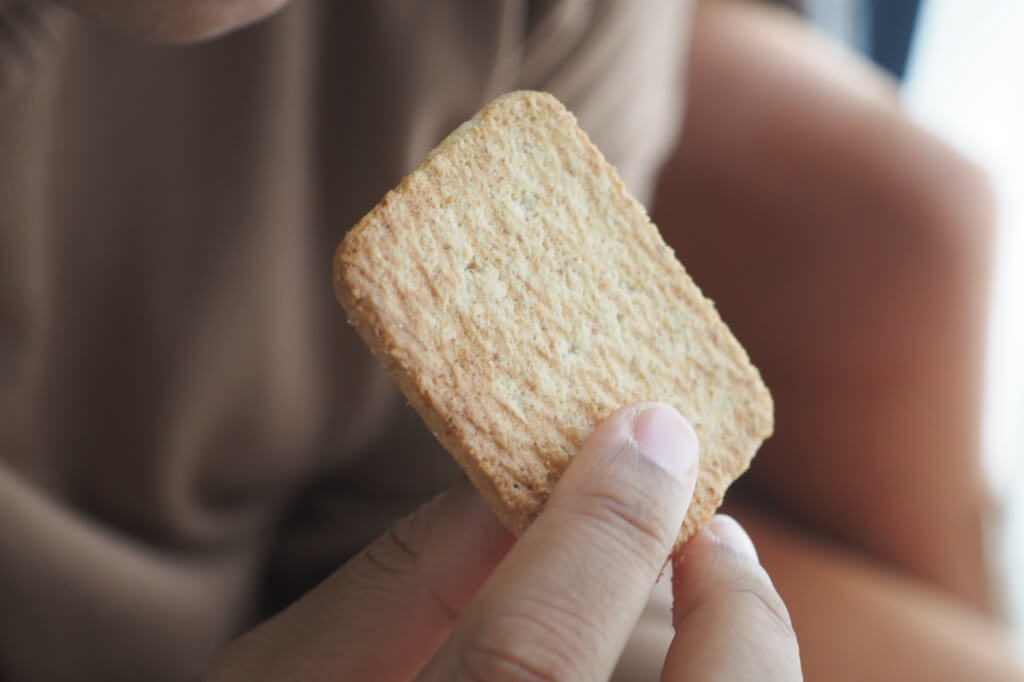For those wary of venturing into natural waters, here’s a compelling reason: every snake, irrespective of its species, is capable of swimming. This means that, in a broader sense, all snakes could be considered ‘water snakes’, though this term is traditionally reserved for those often found near aquatic environments.
How Do Snakes Maneuver in Water?
Snakes swim using lateral, wave-like movements. They create an S-shaped pattern with their bodies, starting from the head and rippling down to the tail. This method is also employed on smooth surfaces on land. By generating this S-shaped motion, snakes push against the water, propelling themselves forward. Water-dwelling snakes, with their more flattened bodies, are particularly adept at this, allowing them a more efficient swim compared to their round-bodied counterparts.
It’s crucial to address the widespread fear surrounding snakes. Contrary to popular belief, snakes are generally not as dangerous as they’re often perceived. Most snakes, even the aggressive ones, will avoid human confrontation unless provoked or cornered. In such cases, they typically issue a warning before striking. Furthermore, about 80% of snake species are harmless to humans. Even among venomous snakes, a significant number of bites are ‘dry’, meaning they inject no venom, as their primary intention is to deter, not harm.
In the U.S., snake bites are far less lethal than commonly feared. Annually, only about 9-15 fatalities occur from snake bites out of approximately 8,000 venomous bites. This statistic reveals that lightning strikes pose a greater risk than snake bites. Even in Australia, home to some of the world’s most deadly snakes, snake bite deaths are remarkably low, with about one fatality per year, fewer than deaths caused by bee and wasp stings.
However, the Black Mamba of Africa is an exception. Known for its extremely potent venom, a bite from a Black Mamba is almost always fatal without immediate and substantial antivenom treatment. The speed of its venom’s lethal effect varies, but death can occur within 30-60 minutes post-bite. The Black Mamba, capable of delivering 100-400 mg of venom in a single bite, is not only deadly but also notoriously aggressive, especially when threatened or protecting its eggs.
Adding to its fearsome reputation, the Black Mamba is the world’s fastest snake, capable of speeds up to 14 mph. Its aggression, coupled with its size (8-14 feet long), speed, and agility, makes it a top predator, second only to humans. Encountering a Black Mamba is perilous, whether on land or in water, and it typically requires a group effort to safely handle an encounter with this formidable snake.
Bonus Facts About Snakes
- When you’re outdoors and encounter a snake bite, identifying whether the snake is venomous can be crucial. Typically, venomous snakes leave two deep puncture wounds. In contrast, nonvenomous snakes often leave a horseshoe-shaped pattern of shallow punctures. This quick assessment can guide your immediate response to the bite.
- If you’re bitten by a venomous snake, your first action should be to call for emergency help. Try to remain as calm and still as possible. Increased heart rate can accelerate the spread of venom in your body. If the bite is on a limb, keep it lower than the rest of your body as you relax or wait for help.
- In a situation where you cannot wait for aid and must move, first take a few minutes to calm down, slowing your heart rate. When you do move, walk slowly and avoid exertion to prevent the venom from spreading quickly through your body.
- Immediately remove any constricting items like rings or bracelets near the bite area. These areas are likely to swell significantly, and removing such items beforehand can prevent additional pain or the need to cut them off later.
- While waiting for help, gently wash the bite area with soap and water if possible. Avoid cutting the bitten area or attempting to suck out the venom, as this can cause more harm and is generally ineffective.
- Instead of a tourniquet, use a soft material to apply a slightly constricting band above the bite. Adjust the band as necessary, ensuring it’s not too tight to block blood flow and avoid placing it near joints.
- Snakes have often been associated with medicine and healing in various cultures. For instance, in Ancient Greece, snakes were seen as servants of the god of healing, Asklepios. Interestingly, the Black Mamba’s name comes from its black mouth, not its external color, which is usually grey or brown. Be cautious around termite mounds in Africa, as Black Mambas, highly protective of their eggs, often use these as nesting sites.
- Be wary of water snakes sunning on overhanging branches, as they might drop into boats below. Additionally, some snakes like the Spitting Cobra, will feign death to deter predators, excreting a foul-smelling substance and even spraying venom when threatened.
- Some snakes exhibit remarkable traits, like the flying snake Chrysopelea, which can glide through the air, or the Calabar Ground Boa, which uses a tail resembling its head to trick predators. The Egg Eater snake has specialized vertebrae to consume eggs efficiently.
- Contrary to popular belief, a snake’s skin is not slimy but rather dry and smooth. Remember, snake venom is not a poison; it’s delivered through a bite rather than being inhaled or ingested. This distinction is crucial for understanding snake bites and their treatment.
Tips For Encountering Swimming Snakes
When you’re enjoying a swim in a natural body of water, be aware that snakes, regardless of their species, can swim. If you spot a snake in the water, it’s likely swimming with its head raised and body submerged. Understanding this can help you distinguish between floating debris and a swimming snake.
Keeping a Safe Distance from Snakes in Water
If you encounter a swimming snake, it’s crucial to maintain a safe distance. While most snakes are not aggressive, they can strike if they feel threatened. Give them space to pass, and avoid sudden movements that might provoke them.
Safe Swimming in Snake-Prone Areas
When swimming in areas known for snakes, try to stay in clear, open waters. Avoid swimming near dense vegetation or under overhanging branches, as these are common hiding places for snakes.
What to Do If a Snake Approaches While You Swim
If a snake approaches you while swimming, remain calm. Slowly and gently move away from the snake’s path. Remember, snakes are usually more scared of you and will not pursue you if they don’t feel threatened.
Precautions for Children and Pets Near Water
Educate your children about the potential presence of snakes in natural water bodies. Keep a close eye on pets as well, as they may inadvertently provoke a snake. Teaching them to recognize and avoid snakes can prevent unwanted encounters.
Snake Behavior in Water
Water snakes are generally either crossing to another area or hunting for food. Understanding their behavior can help you predict their movement and avoid crossing paths with them.
When to Avoid Swimming in Natural Waters
Be extra cautious during snake breeding seasons or in very warm weather, as snake activity tends to increase during these times. It’s wise to avoid swimming in areas known for high snake populations during these periods.
It’s important to acknowledge the innate swimming capabilities of snakes, an aspect often overlooked in our understanding of these reptiles. Their presence in aquatic environments is a testament to their adaptability and evolutionary success. There is a heightened awareness that these adept swimmers enhance our respect for their ecological role and ensure safer interactions in shared habitats.




